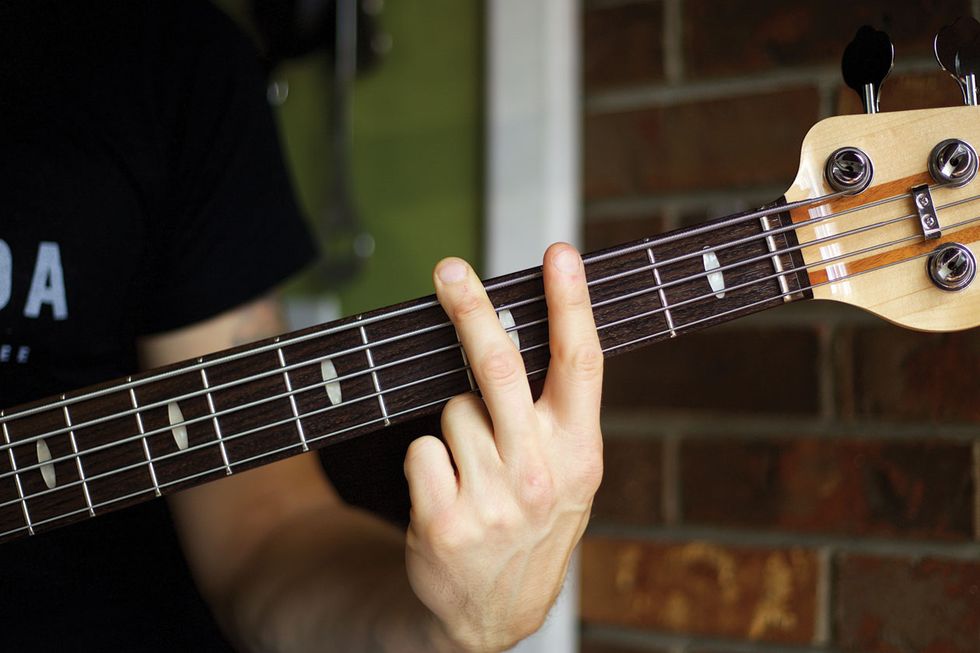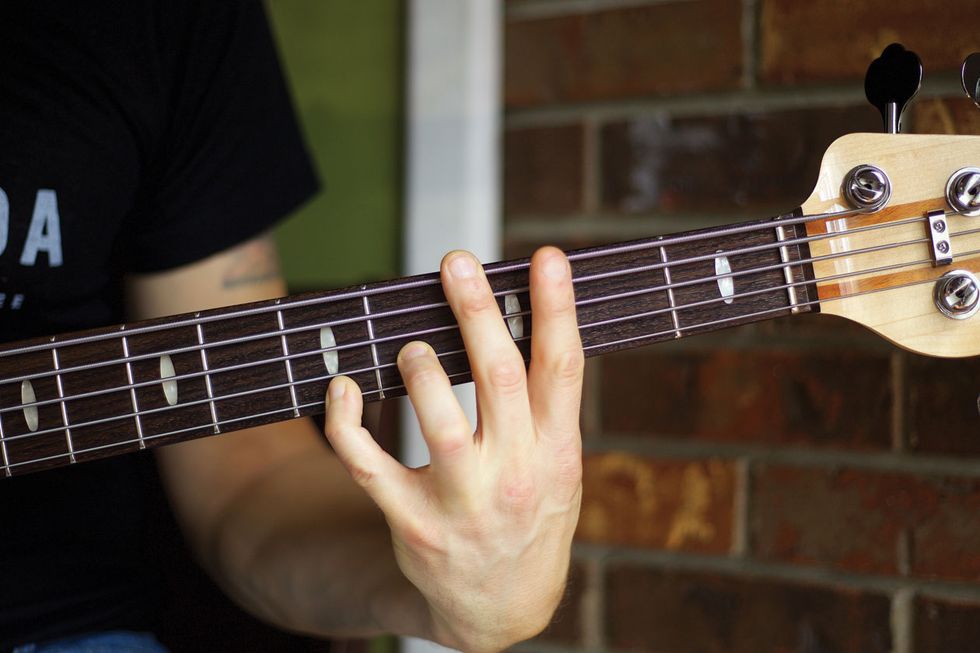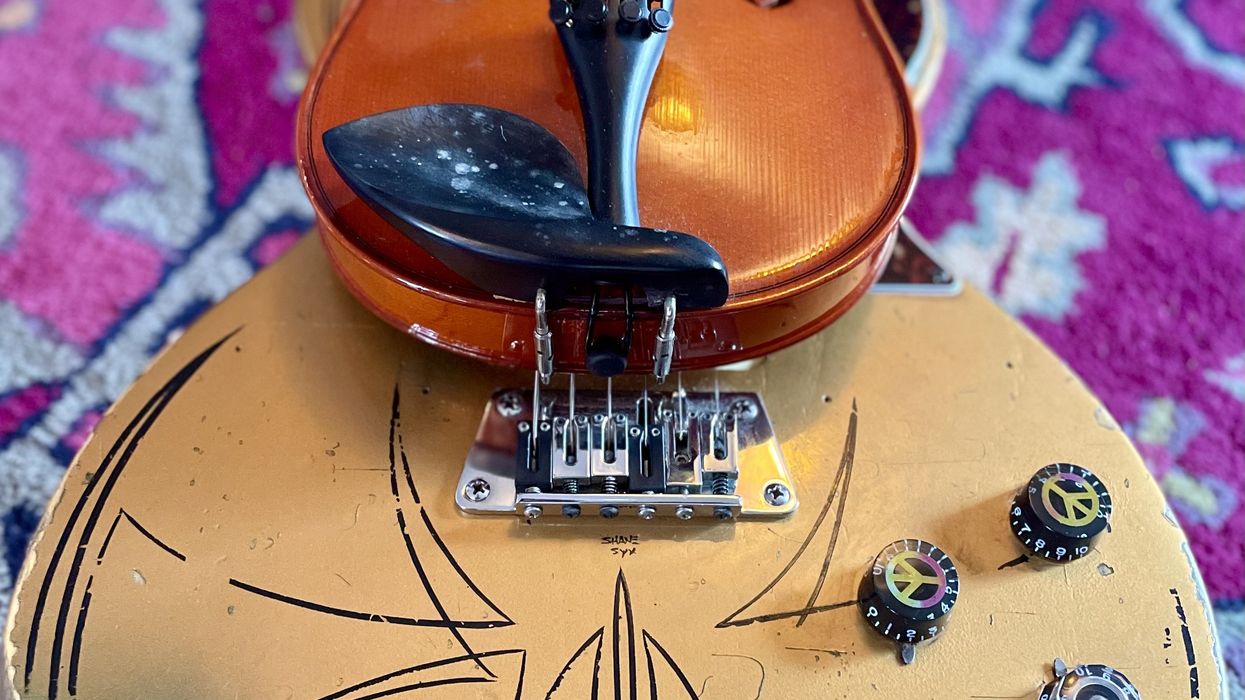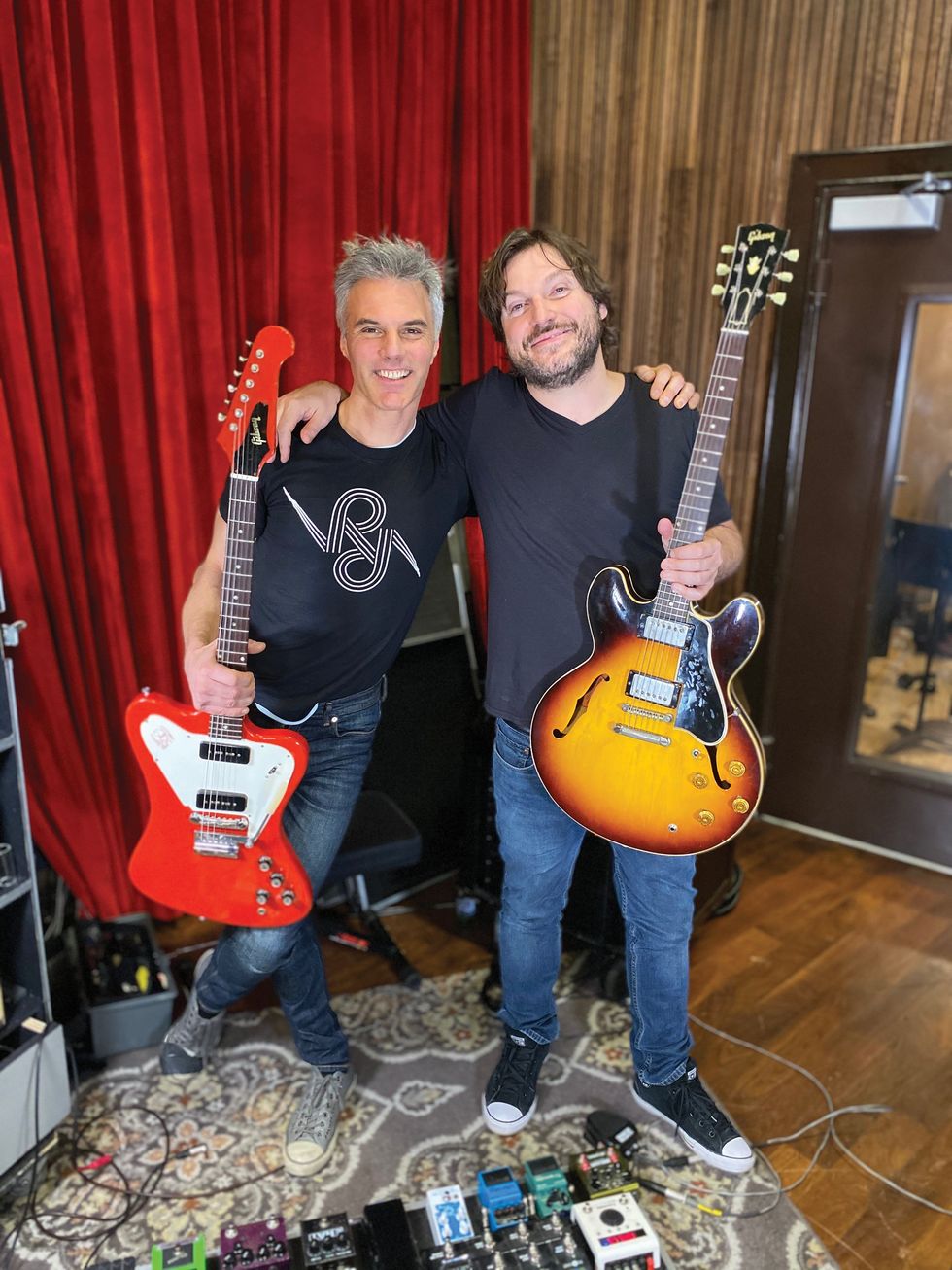In last month’s column ["The String With the Most Bass," November 2017], I made a case for the benefits of playing a 5-string bass. Please know that I am completely aware there are also downsides to a 5-string bass when compared to a 4-string, but again, I truly feel that the pros outweigh the cons. So whether you are just getting acquainted with a 5-string or you are primarily a guitarist who’s considering an inexpensive one for your home studio, I’d like to offer a brief guide to basic 5-string bass applications and discuss a few of the pros. It’s my hope that the following will help you utilize some of the new possibilities at your disposal right away.
Thumb anchoring. For regular readers of my column, the topic of string-to-string evenness is not a new one. It is crucial as a bassist that your instrument has even output throughout its entire register. In addition to the bass itself having inherent evenness, the way we pluck the strings needs to be as even as possible so the front-of-house or studio engineer doesn’t have to use a lot of compression to make up for technical unevenness in our playing.
Most 4-string players spend a fair amount of their time on the 4th string, at least when playing a traditionally supportive role. Playing the 4th string typically requires a player to anchor their thumb on the top of a pickup, on a thumb rest, or sometimes on the top of the neck if you are a reggae player. Subsequently, the 4th string gets played slightly differently than the other three strings since your fingers aren’t quite plucking the notes from the same angle. When playing a 5-string bass, however, the natural place for your thumb to rest when playing the 4th string is typically the 5th string for most players, thereby providing a more even and cohesive tone for the 4th string, which arguably still gets the most playing time.
next-higher octave.
The earthquake. When other bassists go for a tasteful fill going into a chorus or coming out of a section of a song, I often go for a slide. There are a number of different kinds of slides I described in a previous column ["Humanity, Schmutz, and Intentional Imperfection," April 2017], but sliding on the 5th string—especially if you are used to playing a 4-string bass—is supremely liberating and fun. A big slide (about an octave in length) on the 5th string moves a massive amount of air. It’s an effective statement that I use regularly and it almost provides the same sub-sonic thunder as Larry Graham hitting his signature, overly saturated fuzz through a big PA—all without me having to change a single setting or hit any pedals.
The chordal possibilities. Playing chords on a standard bass guitar is an interesting undertaking that usually requires a few tweaks from your normal “fatter” bass-playing settings. First of all, chords typically require leaning on the bridge pickup ever so slightly in terms of volume, since this removes a fair amount of low frequencies that can really muddy up two or more strings ringing together. If you are a player who prefers half-round, flatwound, or even older, broken-in strings for recording, chordal clarity gets even trickier. (You might have to change strings or switch to a different bass altogether.) With the additional four notes on the 5th string, basic chording gets a more open sound that not only adds to your harmonic options, but helps remedy the sonic issue I just described.
A great chordal option to explore is to simply add the 5 in the next-higher octave, which is easily done by fretting your bass note of choice on the 5th string with your second finger, and then adding the high 5 (technically the 12, since the 5 is an octave-and-a-half above the root) with your first finger. Sometimes I don’t even bend the finger and instead use the softer part closer to where the finger attaches to the hand (Photo 1).
Photo 2 — A root-b7 voicing is easily accomplished on a 5-string by using the second finger for the bass note and the
fourth finger for the high b7.
Another easy-to-reach, common, and very usable voicing is to put the b7 up on the 1st string—again fretting the bass note with your second finger, and using your fourth finger to cover the top note (Photo 2). Because I love the open-sounding quality and the simplicity of these chords, they’ve become my go-to—much like the 4-string variation of the same concept that’s heard on so many records with the bass note on the 4th string and the 3 on the 1st string. What’s great about these very basic chords is that they require less EQ’ing or pickup-selector adjustment due to the large tonal interval between the root note and the top one or two chord tones.
The dub sounds. If you’re a player who likes to roll off the tone control to get your lowest few notes on a 4-string to sound fat and soft (aka more felt than heard), try using the same notes, but utilizing their location on the 5th string of a 5-string bass. This provides an even lessdefined, slower attack due to the mass of the string and its less-bright nature.
Remember: Don’t let anyone tell you a 5-string bass is “just four extra notes.”















![Rig Rundown: Russian Circles’ Mike Sullivan [2025]](https://www.premierguitar.com/media-library/youtube.jpg?id=62303631&width=1245&height=700&quality=70&coordinates=0%2C0%2C0%2C0)




